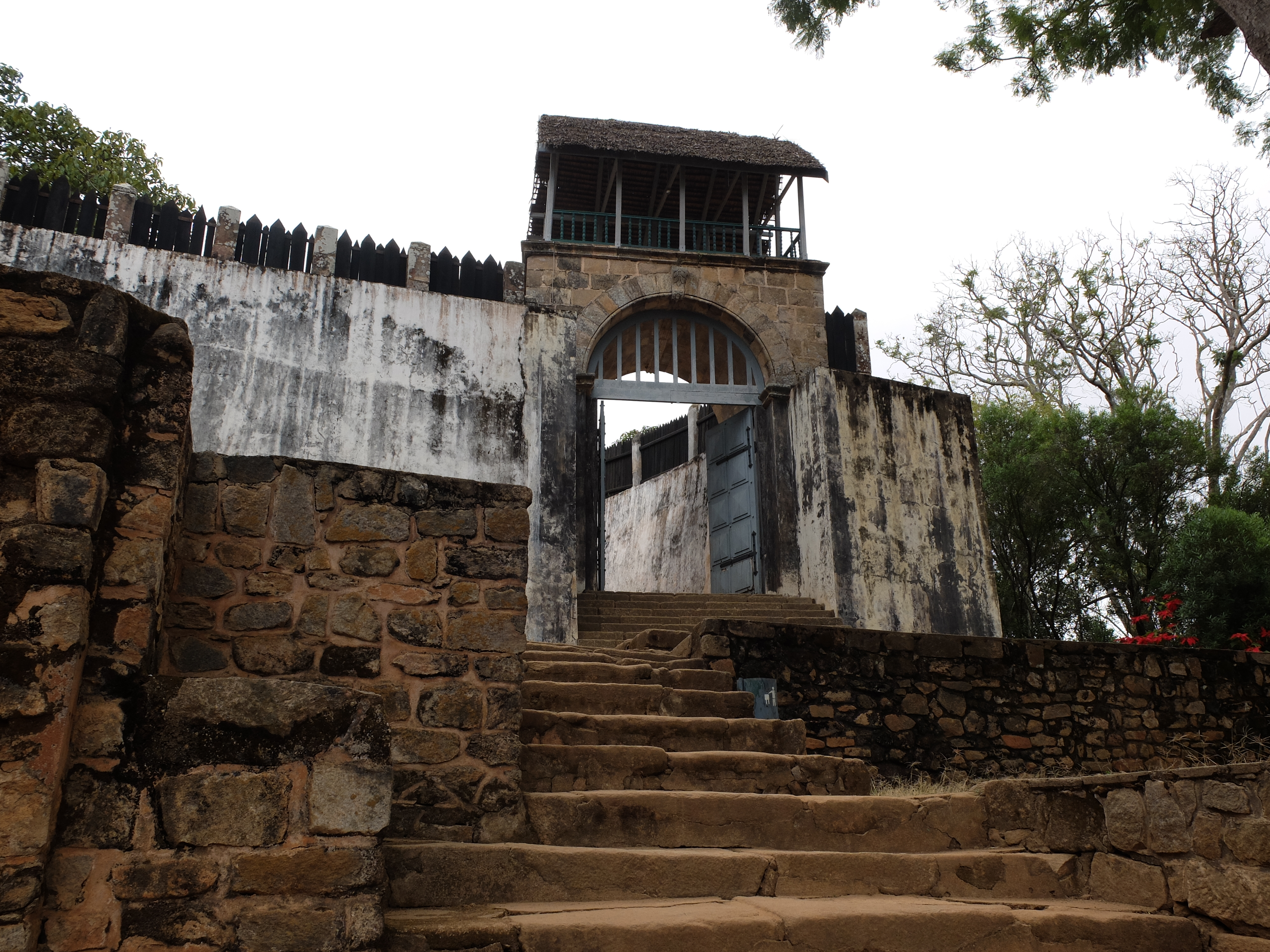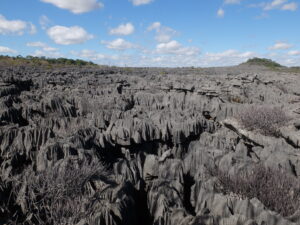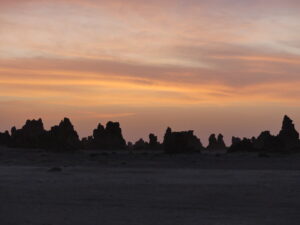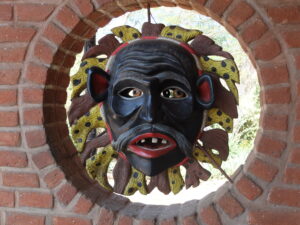
On the highest of several thickly forested hills, the first ruler of the whole of Madagascar established his capital in 1793, after he unified the various island realms of the Malagasy people into a kingdom. This modestly-sized, thick-walled complex capped Ambohimanga, “the place of the blue hill,” where it held a commanding view of the surrounding plains and other hills.
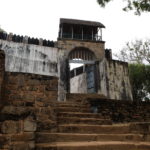
Outside the walls was a place for animal sacrifices to ensure the blessings of the king and the gods. Inside them, he lived traditionally in a Malagasy-style tall wood house, a single room with a high roof supported by two massive tree trunks. These were carried here by slaves who ensured the posts would never touch the ground.
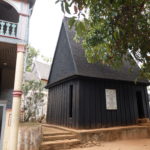
But the king also lived royally. He slept on an elevated platform in the northeast corner, or the royal chamber, while his many wives awaited at ground level. When he bathed, 70 virgins each hauled water three times from the sacred springs far below to fill his stone pool. After his bath, his people drank the sacramental bath water.

Lower down the hill, soldiers manned stone fortifications and 14 gates each of which was sealed at night as seven of the soldiers rolled a massive stone wheel over the entrance. Several of these have survived or been reconstructed, including the principal gate of traditional clay brick where a village – and often a villager – now guards the site entrance.
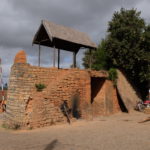
We walked a lot of what remains of the sacred forest below the complex, passing several of the gates along the way.
A few decades after the first king, his son’s wife, who schemed and killed to hold onto power, moved the capital back to the highest ridge in Antananarivo 24 kilometers to the south.

At Ambohimanga, however, she built a summer residence in the European fashion, and continued bathing in style.
Now the Rova, the Ambohimanga complex and fortifications including the Malagasy-style tombs of those 19th century royals, comprise a UNESCO World Heritage site.
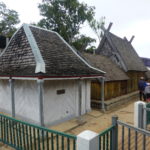
Here visitors can still wander the remaining forest to see the gates with their circular stone covers, tour the two residences with some original furnishings, and also peer thirstily at that royal bathtub.
(Also, for more pictures from Madagascar, CLICK HERE to view the slideshow at the end of the itinerary page.)


